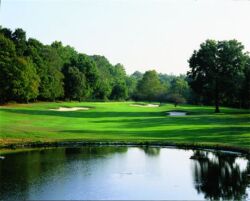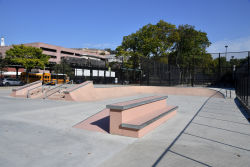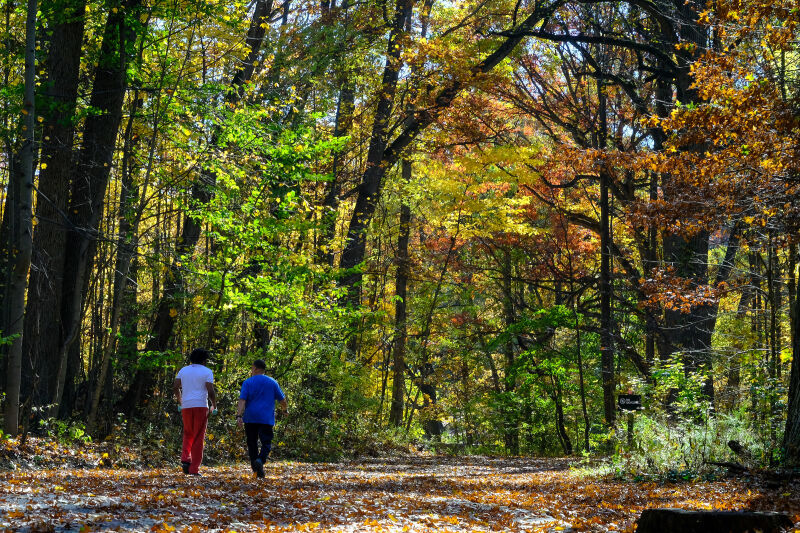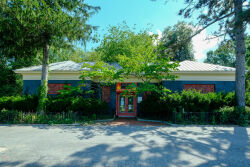Van Cortlandt Park
Van Cortlandt Park - the Wetlands of New York City
Tibbett’s Brook cuts through soft Inwood marble on its way from Westchester to Spuyten Duyvil. Before dividing into a concrete conduit, it feeds the Van Cortlandt Swamp. Though small, this freshwater wetland is ecologically valuable, providing a home for many plant and animal species.
New York City once contained 224,000 acres of freshwater wetland. This valuable ecosystem can slow erosion, prevent flooding by retaining storm waters, filter and decompose pollutants, and slow global warming by converting carbon dioxide into oxygen at a prodigious rate. In the past 200 years, the increasing demands of a growing metropolis have resulted in most of this land being filled for construction, or dredged for transport. Only 2,000 acres of freshwater wetland remain in the city today, and many species that once called the wetland home have been lost forever.
The formation of wetlands can be traced back to the most recent ice age. A massive ice sheet called the Wisconsin Glacier advanced on New York City 75,000 years ago, pushing rock, soil, and boulders ahead. When the ice melted 17,000 years ago, water flowed to the sea, creating streams and rivers that carved through rock. Large glacial fragments broke off, melted, and left depressions called kettles. If layers of fine silt and clay were deposited on the bottom of the depressions, the kettles collected water and ponds formed. Where waters were shallow or flowed slowly, seeds and spores were able to take root and flourish. Generations of plants grew and decomposed, building peat-rich sediments. As wind and water eroded the soil, the steep slopes grew gentler, slowing the passage of water. Plant communities diversified under these favorable conditions, attracting animals that fed on the plants. The sophisticated food web that developed brought advanced predators to the wetlands: snapping turtles (Chelydra serpentina), wolves (Canis lupus), several species of hawks, and humans (Homo sapiens).
Water levels in wetlands are variable, influenced by the underlying rock and soil makeup, rainfall, season, and ground water inputs. Despite these variable conditions, freshwater wetlands teem with life. Water lilies (Nymphaea alba), swamp loosestrife (Decodon verticillatus), and arrowhead (Sagittaria latifolia) each grow at different water depths, almost closing the open water by midsummer. Wood ducks (Aix sponsa) and mallards (Anas platyrhychos) feed and nest among dense strands of aquatic plants such as cattail (Typha latifolia), buttonbush (Cephalanthus occidentalis), arrow arum (Peltandra virginica), and blue flag (Iris versicolor).
The variety of wildlife behaviors, such as feeding, nesting, roosting, courtship, and territorial displays, exhibited in this environment is stunning. As in any diverse neighborhood, there is plenty of “street life”: eastern kingbirds (Tyrannus tyrannus) sing from the treetops, like parents leaning down from their perches to call their young home. Mallards glide out from swamp loosestrife stands and preen themselves in the crimson reflection of swamp rose mallows (Hibiscus palustris), while shy wood ducks, gaily colored, hug the shadows. Green herons (Butorides virescens) and great (Ardea alba) and snowy (Egretta thula) egrets stalk through the muddy waters, looking for fish and frogs. Red-winged blackbirds (Agelaius phoeniceus) cry from cattail stands. Painted turtles (Chysemys picta) loaf atop sunny muskrat lodges, ignoring the belted kingfishers (Ceryle alcyon) feeding above them and raccoons (Procyon lotor) swimming by.
Most of these creatures are carnivores, feeding on insects, crustaceans, and small fish. Mammals, with the exception of muskrats (Ondatra zibethica), hunt in the wetlands but live on its uplands or edges. Edge-living creatures form a wetland’s most stable community. A drought may eliminate the world of deep-water creatures and shallow water may be flooded, but the edges remain.
The once-extensive swamp forests that ringed the lowland were razed to build the nation’s first public municipal golf course in 1895. Enlarged from 9 holes to 18 in 1914, Van Cortlandt Golf Course is known for its many unplanned water traps, relics of its swampy origin. A narrow belt of lowland swamp forest still survives along the Kieran Trail around the open water, where pin oak (Quercus palustris) and red maple (Acer rubrum) grow above Solomon’s seal (Polygonatum biflorum), Virginia creeper (Parthenocissus quinquefolia), marsh fern (Thelypteris palustris), and sensitive fern (Onoclea sensibilis). Predators like barred owls (Strix varia) and red-tailed hawks (Buteo jamaicensis) sometimes hunt in Van Cortlandt’s swamps.
Check out your park's Vital Signs
Clean & Safe
Green & Resilient
Empowered & Engaged Users
Share your feedback or learn more about how this park is part of a
Vital Park System
Downloads
Links
Contacts
Van Cortlandt Park Alliance: (718) 601-1460
Mosholu Golf Center and Driving Range: (718) 655-9164
Park Enforcement Patrol: (718) 430-1815
Special Events Permits: (718) 430-1848
Sports Permits: (718) 430-1840
Tennis Permits: (718) 430-1848
Riverdale Equestrian Centre: (718) 548-4848
Urban Park Rangers: (718) 548-0912
Van Cortlandt Golf Course: (718) 543-4595
Van Cortlandt House Museum: (718) 543-3344
Van Cortlandt Pool: (718) 548-2415
Friends of Van Cortlandt Park: (718) 601-1460
Van Cortlandt Nature Center: (718) 548-0912












